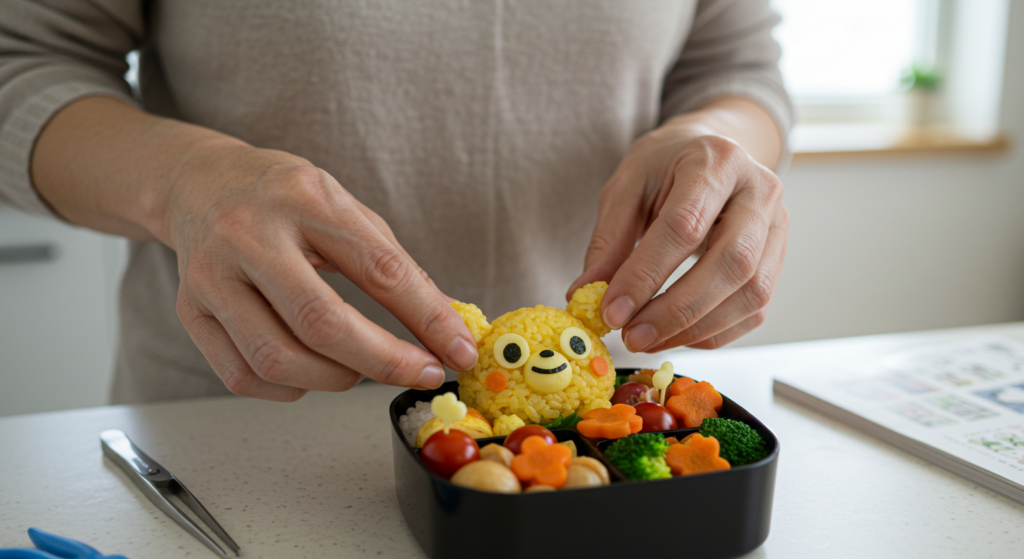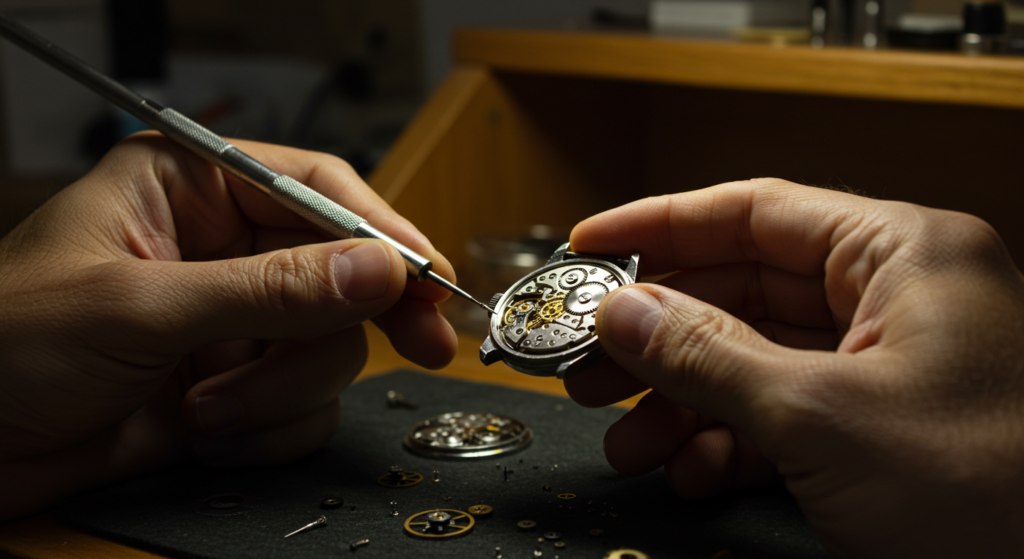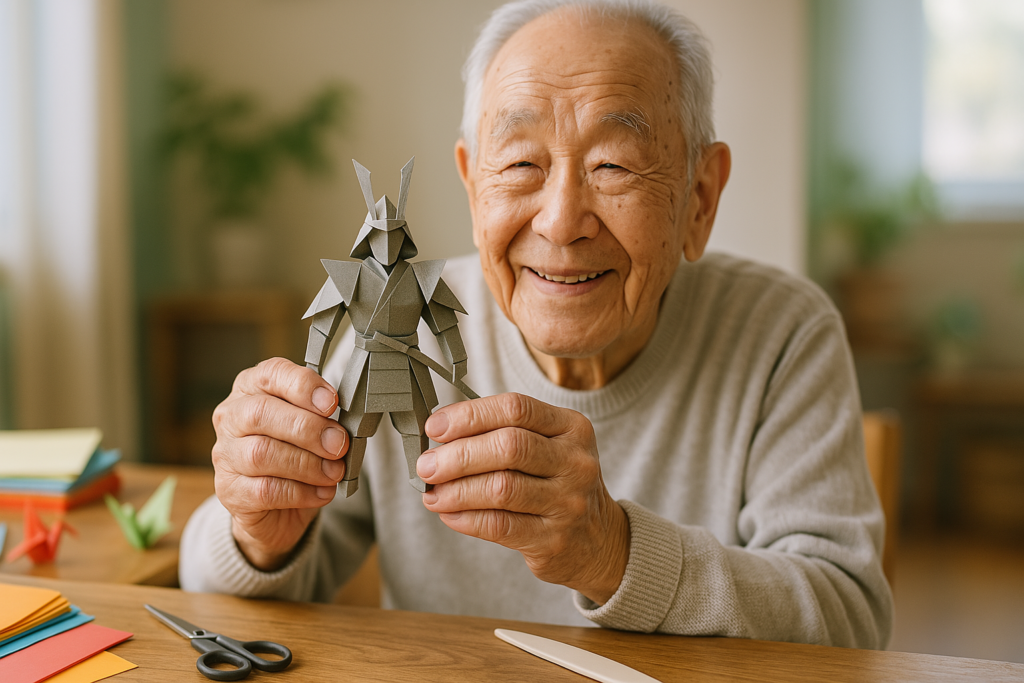「good with one’s hands」と「You’re good with your hands」の違い
「good with one’s hands」と「You’re good with your hands」の違いを、フェインマン・テクニックを使って説明します。
オープニング (Opening)
友達がプラモデルを作るのがすごく上手だったり、おばあちゃんが編み物をあっという間に仕上げたりするのを見たことがありますか?「わあ、すごい! 手先が器用だなあ」って感心しますよね。
今日は、そんな「手先が器用」って英語でどう言うか、特に「good with one’s hands」と「good with your hands」のちょっとした違いについて、一緒に見ていきましょう!
本文 (Main Content)
ステップ1: 身近な経験とつなげる (Step 1: Connect with Familiar Experiences)
まず、日本語の「手先が器用」という言葉を思い出してください。これは、細かい作業が得意だったり、何かを作ったり直したりするのが上手な人のことを言いますよね。
例えば:
- 料理で野菜をきれいに切るのが上手な人
- 絵を描いたり、工作をしたりするのが得意な友達
- 壊れたものをすぐに直してしまうおじいさん
こういう人を見ると、「すごいなあ」って思いますよね。その「すごいなあ」という気持ち、それが今日のテーマにつながります。
ステップ2: 橋をかける (Step 2: Build Bridges)
英語で、この「手先が器用」という 一般的な考えや意味を説明するとき、辞書にはよく “good with one’s hands” と書かれています。
“good with one’s hands”
この “one’s” というのは、「誰かの」という意味ですが、特定の「あなた」や「彼」や「彼女」を指しているわけではありません。「(一般的に)人の」という感じで、辞書で意味を説明するための言い方なんです。日本語で言うと、「(人は)手先が器用である」のような、少し硬い説明のような感じです。
一方、目の前にいる友達や家族など、特定の人に向かって「あなた、手先が器用ですね!」と褒めたいときは、
“You’re good with your hands”
と言います。“one’s” (誰かの) が “your” (あなたの) に変わっていますね。これが一番大きな違いです。 相手に直接、気持ちを伝えるときは “your” を使うんです。
ステップ3: 例を通じて理解を深める (Step 3: Deepen Understanding Through Examples)
もう少し具体的な場面を見てみましょう。

- 例1:友達が壊れたあなたの自転車を直してくれた時
- English: “Wow, you fixed it! You’re good with your hands!“
- Japanese: 「わー、直してくれたんだ! 手先が器用だね!」
- 説明: 目の前の友達 (You) に直接、感心した気持ちを伝えています。だから “your” を使います。

- 例2:料理がとても上手なお母さんについて話す時
- English: “My mother makes beautiful bento boxes. She’s good with her hands.“
- Japanese: 「母は綺麗なキャラ弁を作るんですよ。母は手先が器用なんです。」
- 説明: ここでは「お母さん (She)」について話しているので、”her hands” (彼女の手) と言います。”one’s” や “your” ではありませんね。話している相手ではなく、話題にしている人が器用だと言っています。

- 例3:「手先が器用であること」について一般的に話す時
- English: “Being good with one’s hands is a very useful skill.”
- Japanese: 「手先が器用であることは、とても役に立つスキルです。」
- 説明: これは特定の人についてではなく、「手先が器用」という能力そのものについて話しています。こういう一般的な話の時に、辞書にあるような “one’s” を使うことがあります。
ステップ4: インタラクティブな学び (Step 4: Interactive Learning)
さあ、あなたの周りには「手先が器用だな」と思う人はいますか? 例えば、絵が上手な友達とか、DIYが得意なお祖父さんとか。
- もしその人に直接「すごいね!」って英語で言いたいなら、何と言いますか?
- (考えてみてください… そう、”You’re good with your hands!” ですね!)
- もしその人のことを、他の友達に話すとしたら? 例えば、お兄さんがプラモデル作りが上手な場合。
- (考えてみてください… “My brother is good with his hands.” のように言えますね!)
ここでのポイントは、“one’s” は一般的な意味や辞書の説明で、“your”, “his”, “her”, “my”, “their” などは、特定の人について話す時に使うということです。目の前の人に “He is good with one’s hands.” と言うのは、ちょっと変に聞こえてしまいます。
ステップ5: 理解を強化する (Step 5: Reinforce Understanding)
最初に話した、プラモデル作りが上手な友達や、編み物が得意なおばあちゃんを思い出してください。もしその人に直接「上手ですね!」と褒めるとしたら、もう自信を持って言えますね?
“Wow, you’re good with your hands!“
これでバッチリです!
辞書に載っている “good with one’s hands” は、「手先が器用」という言葉の意味を説明しているもの。そして “You’re good with your hands” は、実際に目の前のあなたに「器用ですね!」と伝えるための、生きた言葉なんです。
クロージング (Closing)
どうでしたか?「good with one’s hands」と「You’re good with your hands」の違い、スッキリしましたか?
「one’s」は一般的な説明、「your」や「his」や「her」は特定の人について話す時に使う、と覚えておけば大丈夫です。
これから誰かが何かを上手に作ったり直したりしているのを見かけたら、ぜひ “Wow, you’re good with your hands!” と声をかけてみてください。きっと喜んでくれますよ!










